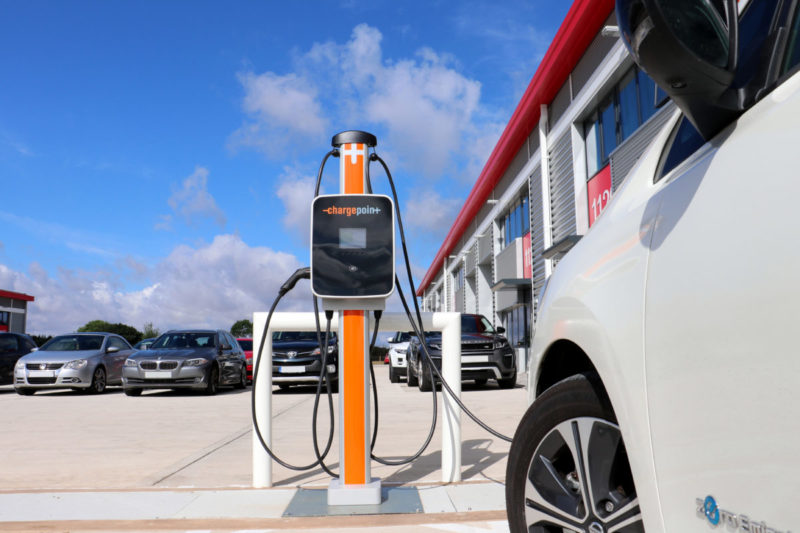5G means much more than better streaming of high definition videos. In the electric vehicles (EV) sector, 5G will be critical to guaranteeing safety and reliability. The EV market is already a fast-growing one, with some even seeing the inevitable tipping point, when more people will be driving EVs than cars with internal combustion engines. ABI Research estimates that there will be 41 million 5G-connected cars on the road by 2030, with that number at least doubling by 2035.
This shift has got the telecoms industry excited, exploring the potential of 5G as a critical part of the EV market, and focusing on the importance of having the right infrastructure in place to provide a support network for the vehicles and their charging stations. The EV market presents a huge opportunity to operators, one that could see them monetise their 5G network through dedicated network slices and edge management to deliver ultra-reliable connectivity. But operators can only do that if their networks, when acting as the backbone of EV infrastructure, are behaving as they should.
So, what role can operators play in enabling this new EV dream? And what lessons can be learned from the EV market that can be applied elsewhere?
Using 5G as a backup
With more EVs expected to take to the roads, reliable network infrastructure to support EV charging stations will become a must-have. Operators will therefore need to provide ultra-reliable, always-on connectivity that isn’t susceptible to outages or failures. Unfortunately, fixed networks can’t always guarantee this, and this is where 5G can play a critical role as a backup for fixed connectivity. But in order for 5G to be an effective backup tool, operators need to be able to dynamically adapt to emergency events—for example, when a severe storm causes power outages or in rural areas where connectivity is weak—and be able to instantly switch to 5G as a backup communication channel between the charging stations and the charging station management system.
The EV market presents a huge opportunity to operators, one that could see them monetise their 5G network through dedicated network slices and edge management to deliver ultra-reliable connectivity
This is where network slicing comes in. In the EV market, network slicing will play an essential role to guaranteeing connectivity. Network slicing allows operators to create individual network slices with their own SLA-grade requirements—for EVs and their charging infrastructure, this means operators are better equipped to guarantee the low latency and reliability they need to adapt to changing scenarios. In the event of a storm, then, an EV will be able to automatically switch to 5G without disrupting or interrupting communication with its charging stations and management systems. Once the storm has passed, or the vehicle is no longer in the eye of the storm, it will dynamically switch back to fixed connectivity.
This ability to offer their network on a slice-by-slice basis gives operators new monetisation opportunities, by being able to create SLA-based revenue, dependent on the use case—or slice—they are selling.
Managing the edge
Providing 5G backup for EV charging infrastructure isn’t the only way in which operators can create new revenue streams from the EV market. Indeed, a second important use case where operators will play a role relates to supporting the EV charging information that is required for EV drivers using a third-party mobile charging app. These apps direct users to areas where charging is available and allow them to pay through their phone. Here again, operators can play an important role in providing the service assurance required in the event of network outages. For example, operators can move the connection of the mobile application’s backend management system to the network edge in case of forecasted outages that could arise during a severe storm. This can be done through edge management, by leveraging predictive analytics to detect potential communication loss between the management system and the network edge. Operators can then use this information to automatically deploy an edge-based local application that allows the forwarding and offloading of resources using a dedicated network slice. This ensures that communication between the EV users’ app and charging stations can be maintained at all times.
Edge management plays a key role in supporting EV infrastructure, and will also prove to be an important monetisation tools for operators. It allows for more control and the ability to better manage the network end-to-end. Much like SLA-grade network slices, this edge control can be monetised according to individual use case requirements.

EVs and beyond
The GSMA predicts 5G will be the first generation of mobile technology to have a bigger impact on businesses than consumers when it comes to monetisation. To create new data-driven revenue streams, operators must leverage the capabilities of 5G to bring to bear new business models, and expend into new sectors and industries.
Edge management and network slicing will play a role in all manner of verticals and many business cases, not just transportation. It’s this route that means operators can become full ICT providers and play an even bigger role than today, where businesses want more sophisticated and complete solutions to solve their business problems.
5G will in the future support activities such as drone connectivity and flight planning, automated farm irrigation systems, smart city command and control, or even robotic surgery. These are critical services that can prove to be far more lucrative than today’s consumer data usage plans.
The increased automation of orchestration and assurance in 5G edge management and network slicing creates a strong use case for enterprise verticals. Service providers have a critical role to play in this ecosystem, but the key to their success will be in ensuring that they have a robust network that can cater to the demands of these evolving use cases.
About the author: Yuval Stein is Associate Vice President, Technologies, at TEOCO



